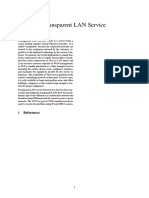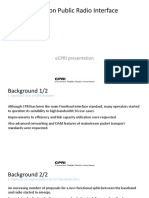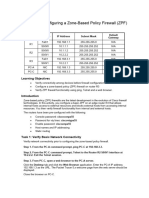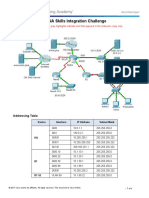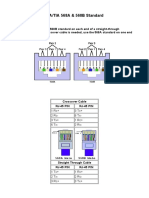Computer networking
Definition: A network is a collection of interconnected devices that communicate with
each other to share resources and information.
Types of Networks:
LAN (Local Area Network): Connects devices within a small geographic area, like a home
or office.
WAN (Wide Area Network): Connects devices over a large geographic area, such as cities
or countries. The Internet is the largest WAN.
MAN (Metropolitan Area Network): Covers a larger area than LAN but smaller than WAN,
like a city.
PAN (Personal Area Network): Connects devices within a very short range, such as
Bluetooth devices.
2. Network Topologies
Bus Topology: All devices are connected to a single central cable (bus).
Star Topology: All devices are connected to a central hub or switch.
Ring Topology: Devices are connected in a circular fashion.
Mesh Topology: Devices are interconnected, providing multiple paths for data.
Hybrid Topology: A combination of two or more topologies.
3.Networking Devices
Router: Connects different networks and routes data between them.
Switch: Connects devices within a network and uses MAC addresses to forward data to the
correct destination.
Hub: A basic device that connects multiple devices in a network, but without the
intelligence of a switch.
Modem: Converts digital data from a computer to analog signals for transmission over
�telephone lines and vice versa.
Access Point: Allows wireless devices to connect to a wired network using Wi-Fi.
4 .IP Addressing
IP Address: A unique address assigned to each device on a network. It allows devices to
identify and communicate with each other.
IPv4: Uses 32-bit addresses (e.g., 192.168.1.1).
IPv6: Uses 128-bit addresses to provide more unique addresses
Sub netting: Divides a network into smaller, manageable sub-networks.
5. Protocols
TCP/IP (Transmission Control Protocol/Internet Protocol): The fundamental protocol
suite used for most networking. TCP handles reliable communication, while IP handles
addressing and routing.
HTTP/HTTPS (Hypertext Transfer Protocol/Secure): Used for transferring web pages.
HTTPS includes encryption for security.
FTP (File Transfer Protocol): Used for transferring files between computers.
SMTP (Simple Mail Transfer Protocol) : Used for sending emails.
DNS (Domain Name System): Translates domain names into IP addresses.
6. OSI Model
The OSI (Open Systems Interconnection) model is a conceptual framework used to
understand and design networking systems. It has 7 layers:
1. Physical Layer: Deals with the physical connection and transmission of raw data bits
over a communication channel.
2. Data Link Layer: Handles error detection and correction, and manages data frames
between devices.
3. Network Layer: Manages addressing and routing of data packets between devices
across different networks.
4. Transport Layer: Ensures reliable data transfer between devices, handles flow control,
and error recovery.
5. Session Layer: Manages sessions or connections between applications.
�6. Presentation Layer: Translates data formats and handles data encryption and
compression.
7. Application Layer: Interfaces directly with user applications and provides network
services.
7. Network Security
Firewall: A security device or software that monitors and controls incoming and outgoing
network traffic based on predetermined security rules.
Antivirus Software: Protects devices from malicious software.
Encryption: Secures data by converting it into an unreadable format that can only be
decrypted by authorized users.
8. Data Transmission
Bandwidth: The maximum rate of data transfer across a network.
Latency: The time taken for data to travel from the source to the destination.
Packet Switching: Data is broken into packets and sent independently across the network.
Packets may take different routes and are reassembled at the destination.
9. Wireless Networking
Wi-Fi: A technology that allows devices to connect to a network wirelessly using radio
waves.
Bluetooth: A short-range wireless technology for connecting devices over short distances.
10. Network Troubleshooting
Ping: A command-line tool used to test connectivity between devices.
Trace route: A tool that shows the path data takes from one device to another.
IP Config: Displays the IP configuration of a device.






























































